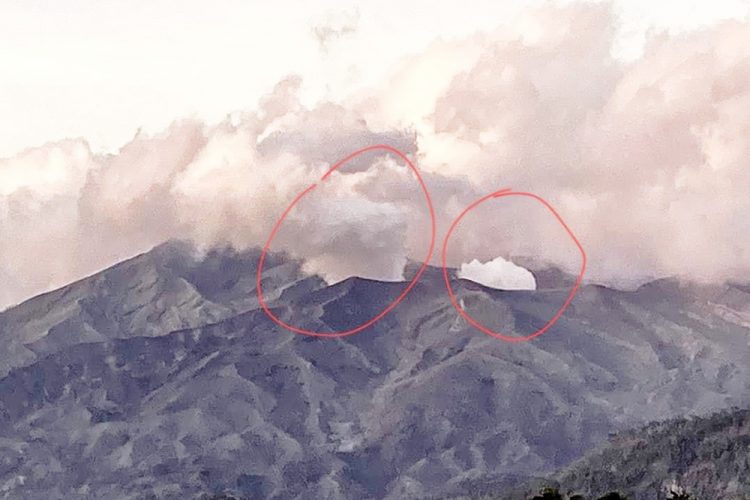Soufriere – Just venting!

SINCE THE LAST EXPLOSION at La Soufrière on April 22, seismic signals from the stations still connected to the network, were reflecting a low activity level.
Giving an update on the National Broadcasting Corporation(NBC) radio yesterday morning, April 26, lead scientist on the ground monitoring the eruption, Professor Richard Robertson, noted that since Thursday’s eruption things have been relatively quiet.
Joining Robertson in giving this update was volcano-seismologist Roderick Stewart. Stewart explained that seismically, there have been different volcanic earthquakes, such as the volcano-tectonic, the long period, and the hybrid, that have been recorded throughout the explosive period.
“Since the explosion on the 22nd, we’ve had very, very few, just the occasional one and they’ve been very small. So those have been an incredible change in the activity,” he explained.
The last explosion, the 32nd that La Soufrière has released since April 9, began at 11:09am on April 22, and lasted for about 20 minutes, with the vertical explosive plume reaching a height of about 8km. This event was accompanied by high-level seismic tremor. “There is a problem from my view as a seismologist in that, it’s very difficult to compare the level now to the level before the explosion started,” Stewart revealed yesterday. This is because, at that point, “…when we had a small dome growing, the only seismic signals we saw were from the one station which was at the summit, and that station’s gone now, it was destroyed in the eruption.”
There were eight seismic stations that the scientists had established before the explosive period to monitor the different earthquakes from the volcano in real time; and of these five are still up and running.
Because the station at the summit has probably been destroyed in the explosions, “…it’s quite difficult to say if it’s quieter than it was before the eruption or if it’s the same level,” the volcano-seismologist indicated.
“There may well be a dome growing and we can’t pick up the seismicity because we can only get it near the summit, but overall it’s been remarkable, the change in the level of (seismic) activity after that last explosion,” he continued, “we’ve gone back to virtually silent.”
Professor Robertson said that key stations such as the one at Wallibou which they had depended on, “…which would have had a lot more earthquakes during the explosive events and in between; we essentially not having any events on them currently.
“…but in terms of whether or not there is actually something happening that we’re not detecting seismically because we don’t have that close-in station,” is something to consider.
“…In fact ‘Rod’(Stewart) is going up in a plane today( April 26) to try to have a peep in the crater to see if we could confirm what we think might be happening, which is, that there might be a dome growing,” the Professor revealed.
Satellite radar imagery acquired on April 24 had indicated probable continued growth or formation of a lava dome.
“We hope at some point in the future, once it’s safe, to put back in a (seismic) station close in, so we can start getting those close-in signals here,” Robertson noted.
Stewart added that they weren’t ready to do that yet, and that they weren’t going near the summit at the moment.
“No, not a good idea,” the Professor agreed.
A few hours later, on the evening update on the UWI-SRC page, the SRC informed that the observation flight took place at 11:30am, but visibility was poor, with clouds blocking the crater for much of the time. White steam was observed venting “near-continuously from several locations on the crater floor.”
No dome was visible, “although a spine could be seen through the clouds.”
The volcano alert level remains at red, the eruption in still ongoing, and La Soufrière is still very dangerous.









